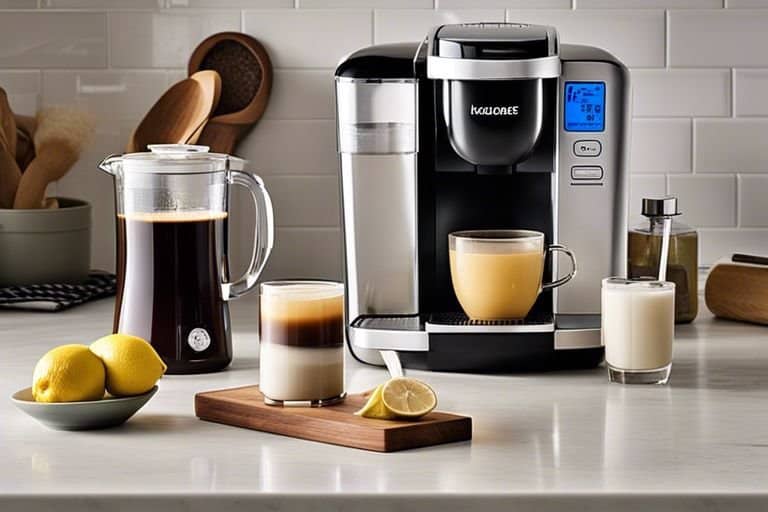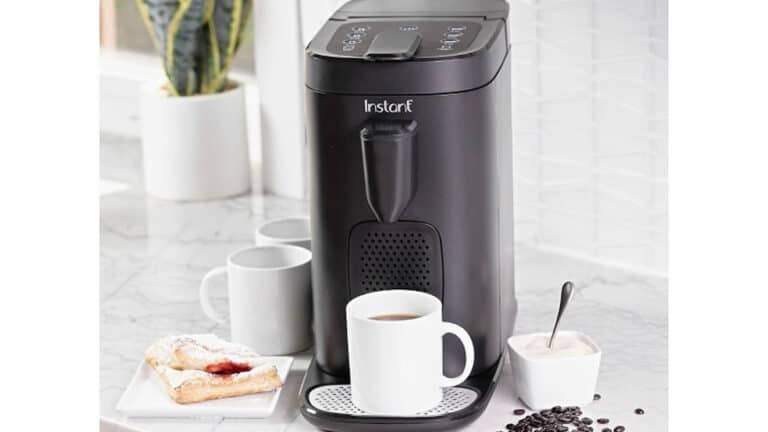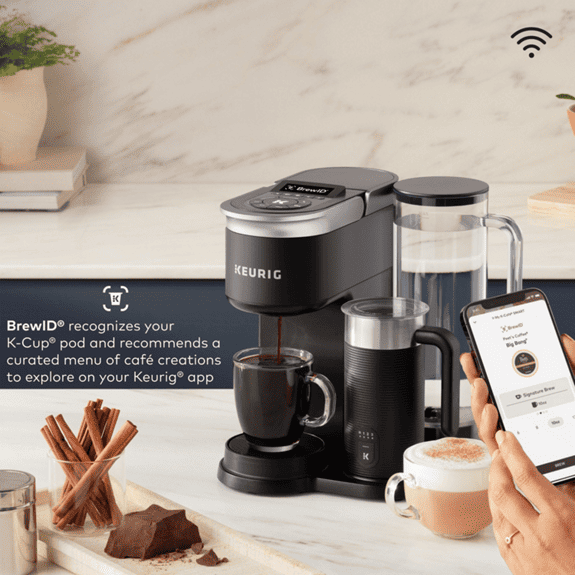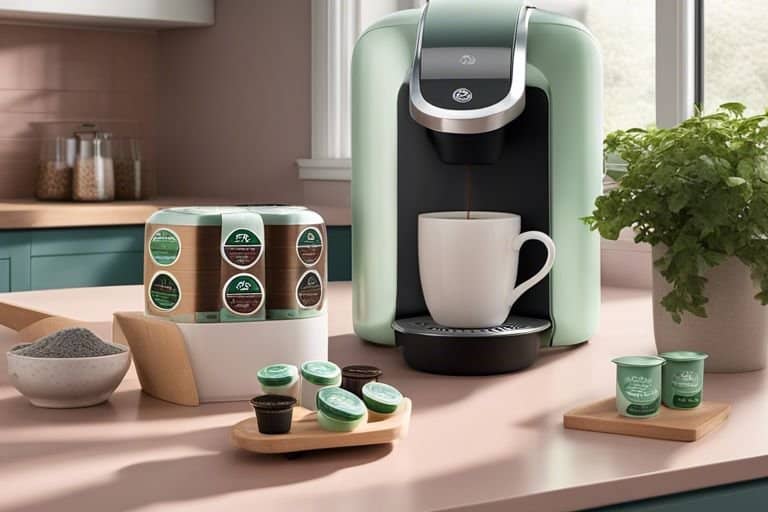How to Clean and Maintain Your K-Cup Coffee Maker for Optimal Performance

Indubitably, proper maintenance and cleaning of your K-Cup coffee maker is essential for ensuring the best performance and longevity of your beloved machine. Over time, mineral deposits, coffee residue, and bacterial growth can build up in your coffee maker, leading to decreased efficiency and potentially harmful health effects. In this post, I will guide you through the necessary steps to thoroughly clean and maintain your K-Cup coffee maker, keeping it in peak condition for endless delicious cups of coffee.
Understanding Your K-Cup Coffee Maker
By understanding the inner workings of your K-Cup coffee maker, you can ensure that it stays in optimal condition for years to come. From the anatomy of the machine to how it operates, this knowledge will help you take better care of your beloved coffee maker.
Anatomy of a K-Cup Coffee Maker
When you look at a K-Cup coffee maker, you see a sleek and compact appliance that fits perfectly in your kitchen. Inside, there are several key components that you should be familiar with. The water reservoir, the brewing chamber, the pump, and the control panel are all vital parts of the machine. Understanding how these parts work together can help you troubleshoot any issues that may arise and maintain your machine more effectively.
How K-Cup Coffee Makers Work
K-Cup coffee makers are designed to brew a single cup of coffee quickly and efficiently. The process starts with the user selecting a K-Cup pod and placing it in the brewing chamber. When the machine is activated, the water from the reservoir is heated and pumped into the K-Cup, extracting the flavor and aroma of the coffee. The brewed coffee then flows into your mug, ready to be enjoyed. Understanding this process can help you make the most of your coffee maker and identify any potential problems that may affect the quality of your coffee.

Regular Cleaning Routine for Your K-Cup Coffee Maker
Obviously, the key to optimal performance of your K-Cup coffee maker is regular cleaning and maintenance. By incorporating a simple cleaning routine into your coffee-making process, you can ensure that your machine consistently delivers the best-tasting coffee and operates at peak efficiency. Here are some practical tips for keeping your K-Cup coffee maker clean and well-maintained.
Daily Cleaning Steps
Every day, after using your K-Cup coffee maker, take a few moments to wipe down the exterior of the machine with a damp cloth to remove any coffee spills or residue. Additionally, remember to remove and rinse the drip tray and the K-Cup holder. By keeping these parts clean, you can prevent the buildup of coffee grounds and oils, which can affect the taste of your coffee.
Weekly and Monthly Maintenance Tips
For more thorough cleaning, I recommend disassembling the removable parts of your K-Cup coffee maker, such as the drip tray, K-Cup holder, and water reservoir, and washing them with warm, soapy water. Be sure to thoroughly dry these parts before reassembling them. In addition, descale your machine at least once a month using a solution specifically formulated for coffee makers. Descaling helps remove mineral deposits that can affect the machine’s performance and the taste of your coffee. Knowing how to properly descale your K-Cup coffee maker can extend its lifespan and ensure that it continues to brew delicious coffee for years to come.
- Regularly wipe down the exterior with a damp cloth
- Remove and rinse the drip tray and K-Cup holder daily
- Disassemble and wash removable parts weekly
- Descale the machine monthly to remove mineral deposits

Deep Cleaning Your K-Cup Coffee Maker
Lastly, it’s important to deep clean your K-Cup coffee maker regularly to ensure optimal performance and longevity. Over time, mineral deposits and coffee residue can build up inside the machine, affecting the taste of your coffee and potentially causing functional issues. Deep cleaning your K-Cup coffee maker will help to prevent these issues and keep your machine running smoothly.
Decalcifying Your Machine for Longevity
Decalcifying your K-Cup coffee maker is an essential part of deep cleaning. Over time, mineral deposits from water can build up in the internal components of the machine, affecting performance and taste. To decalcify your machine, I recommend using a commercial descaling solution specifically designed for coffee makers. Follow the manufacturer’s instructions for the proper dilution and application. Regular decalcification will help to extend the life of your machine and ensure that it continues to deliver delicious coffee.
Troubleshooting Common Issues and Solutions
If you encounter any issues with your K-Cup coffee maker, it’s important to address them promptly to avoid further damage. One common issue is a clogged needle, which can result in a slow brewing process or improper coffee extraction. To troubleshoot this issue, I recommend using a paperclip or a needle to carefully unclog the entry and exit needles. Additionally, if your machine is not producing hot enough coffee, you may need to run a few cycles of just hot water to clear any blockages in the water lines. By addressing these common issues promptly, you can ensure that your K-Cup coffee maker continues to perform at its best.
Additional Care and Maintenance Tips
Now that you have a solid routine for cleaning and descaling your K-Cup coffee maker, there are a few additional care and maintenance tips to keep in mind to ensure optimal performance and longevity.
- Regularly check the power cord and plug for any signs of wear or damage. If you notice any issues, replace them immediately to avoid electrical hazards.
- Inspect the water reservoir for any build-up or residue, and clean it with a mild soap solution to prevent clogs and maintain the quality of your coffee.
- Consider investing in a water filter for your K-Cup coffee maker to reduce mineral build-up and improve the taste of your coffee.
Recognizing the importance of these additional care steps will help keep your K-Cup coffee maker brewing like new. For more detailed maintenance tips, you can check out the official Keep Your Keurig® Coffee Maker Brewing Like New with Regular Maintenance guide from Keurig.
Choosing the Right Cleaning Supplies
When it comes to cleaning supplies for your K-Cup coffee maker, it’s essential to use products that are recommended by the manufacturer. Using the wrong cleaning agents can damage the machine and affect the taste of your coffee. Look for Keurig-certified cleaning solutions and follow the instructions carefully to ensure proper maintenance.
When to Consider Professional Servicing
While regular cleaning and maintenance can do wonders for your K-Cup coffee maker, there may come a time when you need to seek professional servicing. If you notice persistent issues such as inconsistent brewing, unusual noises, or leaks, it’s best to contact the manufacturer or a certified technician to diagnose and resolve the problem. Attempting to repair complex issues on your own can lead to further damage, so don’t hesitate to seek professional assistance when needed.
Conclusion
From above, I have provided you with essential tips on how to clean and maintain your K-Cup coffee maker for optimal performance. It is imperative to regularly descale and clean your machine to ensure that it continues to produce high-quality coffee and maintains its longevity. By following these simple steps, you can prevent clogs, leaks, and other issues that may arise from neglecting maintenance. Ultimately, keeping your K-Cup coffee maker clean will lead to a better coffee experience for you and ensure the longevity of your machine.





